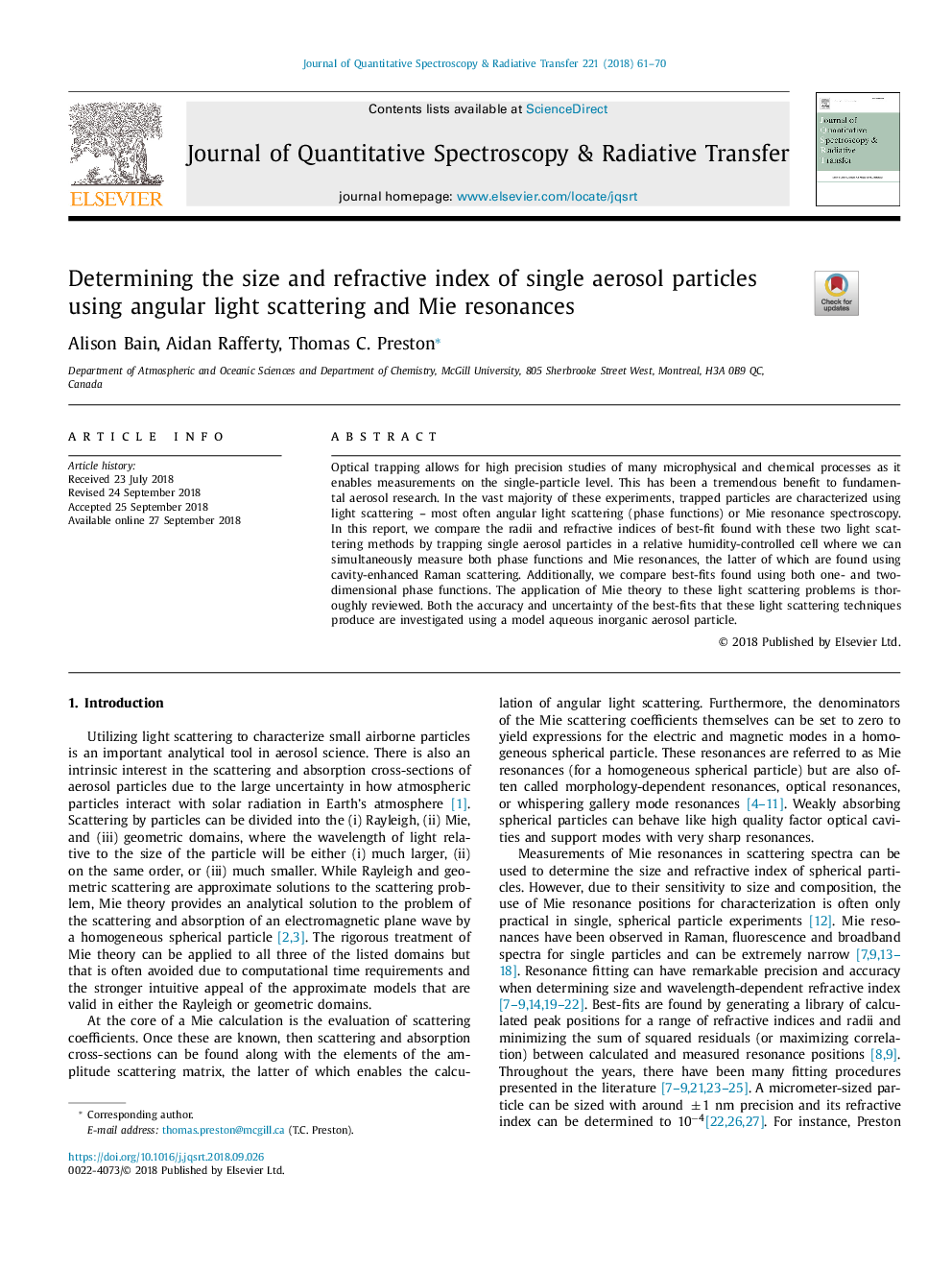| Article ID | Journal | Published Year | Pages | File Type |
|---|---|---|---|---|
| 11015888 | Journal of Quantitative Spectroscopy and Radiative Transfer | 2018 | 10 Pages |
Abstract
Optical trapping allows for high precision studies of many microphysical and chemical processes as it enables measurements on the single-particle level. This has been a tremendous benefit to fundamental aerosol research. In the vast majority of these experiments, trapped particles are characterized using light scattering - most often angular light scattering (phase functions) or Mie resonance spectroscopy. In this report, we compare the radii and refractive indices of best-fit found with these two light scattering methods by trapping single aerosol particles in a relative humidity-controlled cell where we can simultaneously measure both phase functions and Mie resonances, the latter of which are found using cavity-enhanced Raman scattering. Additionally, we compare best-fits found using both one- and two-dimensional phase functions. The application of Mie theory to these light scattering problems is thoroughly reviewed. Both the accuracy and uncertainty of the best-fits that these light scattering techniques produce are investigated using a model aqueous inorganic aerosol particle.
Related Topics
Physical Sciences and Engineering
Chemistry
Spectroscopy
Authors
Alison Bain, Aidan Rafferty, Thomas C. Preston,
